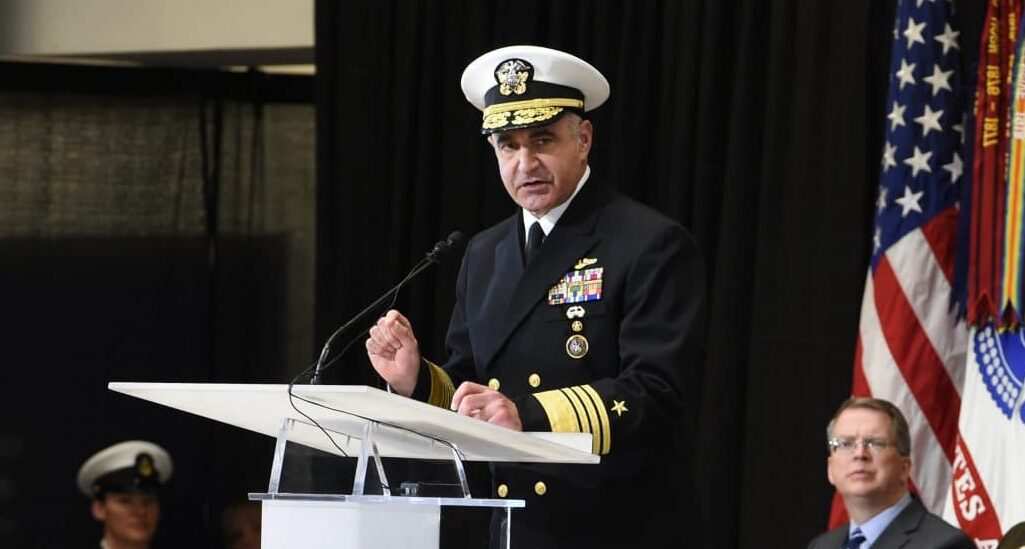
The United States is “furiously” writing a new nuclear deterrence theory that simultaneously faces Russia and China, said the top commander of America’s nuclear arsenal—and needs more Americans working on how to prevent nuclear war.
Officials at U.S. Strategic Command have been responding to how threats from Moscow and Beijing have changed this year, said STRATCOM chief Navy Adm. Charles “Chas” Richard.
As Russian forces crossed deep into Ukraine this spring, Richard said he delivered the first-ever real-world commander’s assessment on what it was going to take to avoid nuclear war. But China has further complicated the threat, and the admiral made an unusual request to experts assembled at the Space and Missile Defense Symposium in Huntsville, Alabama, on Thursday:
“We have to account for three-party [threats],” Richard said. “That is unprecedented in this nation’s history. We have never faced two peer nuclear-capable opponents at the same time, who have to be deterred differently.”
The need for a new deterrence theory comes as institutional expertise on avoiding nuclear war has atrophied, Richard said.
“Even our operational deterrence expertise is just not what it was at the end of the Cold War. So we have to reinvigorate this intellectual effort. And we can start by rewriting deterrence theory, I’ll tell you we’re furiously doing that out at STRATCOM,” Richard said.
To respond to Russia this spring, the United States launched nuclear command post teams in its E-6 Mercury “Looking Glass” aircraft, which are militarized Boeing 707s, on extended airborne operations. Military leaders also worked to get its other combatant commands on the same page as to how to dampen and corral Russian escalation.
STRATCOM also took steps to evolve past the traditional nuclear deterrence theory of “mutually assured destruction,” which posits that any use of nuclear weapons would result in retaliatory use and total annihilation of all parties—and has prevented nuclear war for almost 75 years.
That’s because early in the invasion, Russian President Vladimir Putin suggested Moscow could respond to any Western defense of Ukraine with nuclear weapons. U.S. officials worry, though don’t expect, that could mean Russia using smaller warheads in limited numbers on specific targets, rather than launching the global thermonuclear war they had feared for decades.
“Moscow is using both implicit and explicit nuclear coercion,” Richard said.”They’re trying to exploit a perceived deterrence gap, a threshold below which they mistakenly believe they may be able to employ nuclear weapons,” such as using their tactical, shorter range nukes.
The threats pushed STRATCOM to shift its reaction.
“We’ve got some better two-party stuff that’s actually working quite well in the current crisis that is radically different,” Richard said. “Non-linearity, linkages, chaotic behavior, inability to predict – all attributes that just don’t show up in classic deterrence theory.”
“But that’s a two-party version,” Richard said. And does not take into account worrisome developments in China’s hypersonics that might carry nuclear warheads, President Xi Jinping’s ambitions toward Taiwan, the lessons Beijing is taking away from Western response to Ukraine, or the possibility that China and Russia may find it advantageous to combine their ambitions and force the United States to face simultaneous nuclear threats.
“Russia and the PRC have the ability to unilaterally, whenever they decide, they can escalate to any level of violence in any domain. They can do it worldwide and they can do it with any instrument of national power. We’re just not used to dealing with competitions and confrontations like that,” Richard said.
___
© 2022 Government Executive Media Group LLC
Distributed by Tribune Content Agency, LLC.